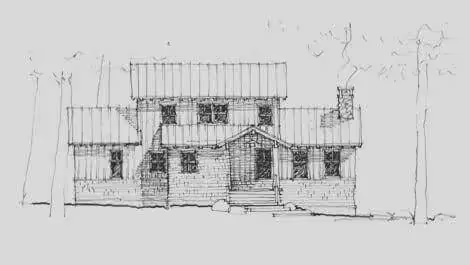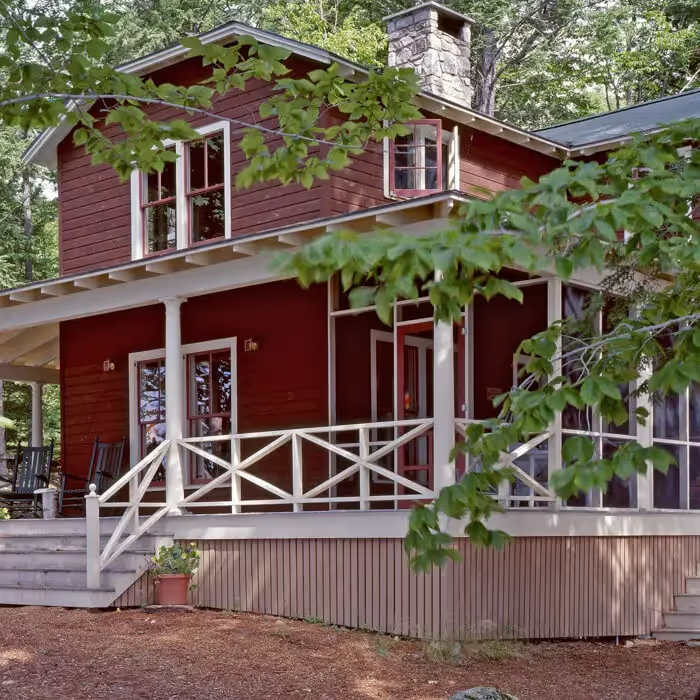Camp Porta Panagia


Project Location: Sebago Lake, Maine
Since 1951, four generations of family have summered in this spot — a sloping piece of land overlooking Sebago Lake and nestled in a grove of Eastern white pines. Over the years, the original camp had deteriorated and could no longer serve our clients and their growing family’s needs. Our goal was to create a new year-round camp on the site that could accommodate the current generations of their family: now four adult children, two spouses, and two grandchildren.
Our design takes full advantage of the site’s surrounding natural beauty. As you enter from the north, the view unfolds towards walls of south-facing glass overlooking the lake. Living areas and bedrooms are situated up front for maximum exposure to scenery and sun, while bathrooms and utility spaces are located in the back. Due to zoning restrictions, we had a limited footprint to work with: roughly 2,900 square feet. Our challenge was to create an efficient floor plan that accommodated all of the program needs, which included a modern kitchen, dining for 12, a living room, a screened porch and balcony, four bedrooms, an entry mudroom, a recreation room, laundry, and three-and-a-half baths. We designed three floors organized around a central staircase, and in lieu of hallways, created spaces that multi-task. Areas that one walks through are meant to double as sitting, dining, or storage spots. Many rooms feature floor-to-ceiling shelving or cabinetry, and in the upstairs bedrooms, the closets extend out from the walls so they can be topped with bunks. Despite the home’s compact footprint, the spaces feel generous and well proportioned thanks to large windows and high ceilings. By varying the ceiling styles (pine boards in the kitchen and entry, exposed framing above the dining area, and a cathedral ceiling in the living room) we also created a sense of volume.
The materials — among them woods like pine, red birch, white cedar, and hemlock — take their lead from the surrounding environment, and are inspired by a traditional camp aesthetic. Interior and exterior spaces flow together seamlessly; the same posts and beams from outside are repeated inside, and beige board-and-batten siding and gray-green shingles blend with the wooded site. Although rustic in appearance, the camp functions with high-efficiency materials and systems that provide low-maintenance and a long lifespan.
Project Completion Date: 2012
Photography:
Collaborators:
- Structural Engineer: Albert Putnam Associates
- General Contractor: Island Cove Building and Development
- Landscape Contractor: Isaac N. Labbe Masonry
Related Press:



